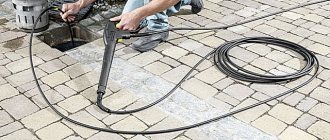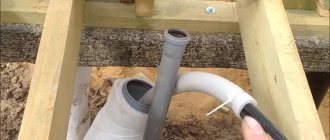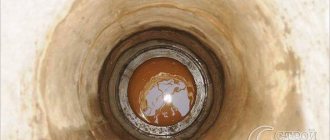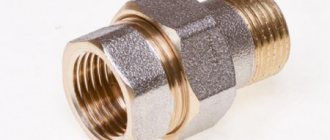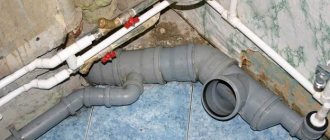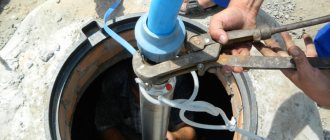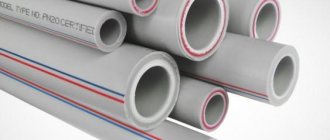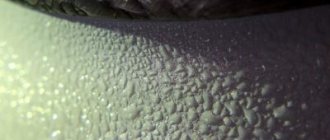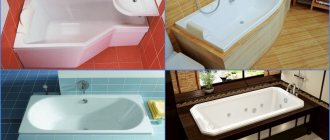I welcome my dear reader and offer him an article on how to connect metal-plastic pipes when installing engineering systems in an apartment or cottage.
The direction of development of modern technologies is to complete any work faster, cheaper, easier. The most obvious example of this is the transition from the use of heavy and corrosion-resistant steel pipes to light, stainless and technologically advanced plastic and metal-plastic ones.
The installation of engineering systems in the house has become an activity accessible to everyone. First, plastic pipes appeared, then they came up with the idea of creating composite products - more durable, reinforced with aluminum foil. Installation of modern metal-plastic no longer requires heavy equipment, such as a welding machine, or special skills from the installer.
Advantages and disadvantages of these pipes
Metal-plastic pipes consist of a polymer (thermoplastic) and a frame made of aluminum foil or a mesh steel base. Products with a durable mesh frame are not used for engineering systems of buildings. For household engineering systems, polyethylene, polypropylene, cross-linked polyethylene (PEX), and heat-stable polyethylene (PE RT) are mainly used.
Reinforcement allows you to combine the plasticity of polymers with the strength of metal, in this case aluminum. Aluminum foil has a thickness of tenths of a millimeter. The foil is welded together using ultrasonic welding. The frame is filled with polymer. An adhesive is used to enhance the adhesion between the plastic and the foil.
Metal-plastic pipes allow you to combine the advantages of traditional steel pipes and stainless, but less durable plastic ones.
Features of metal-plastic pipe products
Metal-plastic pipes have a complex structure and combine the advantages of metal and plastic. The product consists of five layers:
- The inner and outer layers are cross-linked or compacted polyethylene. An organic material that does not change its structure, physical properties and remains chemically passive at temperatures up to 95 degrees and internal pressure up to 10 atm.
- The inner layer is aluminum foil. This lightweight and flexible metal gives the metal-plastic pipe special strength, the “ability” to hold a curved shape, and prevents the penetration of atmospheric oxygen inside.
- Two layers of special glue that hold the metal and stitched polyethylene together.
Note! Combined pipes are marked according to their structure: PEX-AL-PEX for cross-linked polymer; PE RT-AL-PE RT for heat-resistant material. It is applied to each product from the outside.
Advantages of metal-plastic pipes
Unlike a steel pipeline, the result is:
- much cheaper;
- lighter in weight;
- do not burst in the cold, being filled with coolant;
- Corrosion resistant.
Unlike plastic pipes, metal-plastic:
- remain flexible, but retain the given configuration, which allows the use of fewer fasteners and fittings;
- able to withstand increased loads;
- do not require soldering during installation;
- have less linear expansion.
We recommend that you familiarize yourself with: Flange adapter for connecting PE pipes
Possessing the reliability of a metal pipe, metal-plastic household communications have the service life of modern plastic.
Advantages of metal-plastic
The biggest advantage of reinforced pipes over steel is their resistance to corrosion. They cost less compared to steel and especially copper systems, installation is cheaper and easier. Metal-plastic systems are resistant to aggressive environments, and the water in them does not acquire an unpleasant odor or taste.
The service life under standard operating conditions is tens of years; in cold water communications it can reach half a century (perhaps even more). The potential service life of cross-linked polyethylene systems for cold water can reach 100 years (but not yet tested, we'll see).
The durability of metal-plastic communications depends on the operating pressure and temperature - in hot water supply and heating systems, metal-plastic serves less.
Reinforcement reduces the permeability of pipelines to gases, in particular oxygen, which extends the service life of metal parts. Metal-plastic products are durable, harmless to humans, environmentally friendly, and do not rot.
The smooth inner surface causes low hydraulic resistance of metal-plastic communications. Salt deposits do not settle on the walls of pipelines.
Thermal expansion is 3-5 times less than that of plastic without reinforcement, its frost resistance is up to -55 ° C. Thermal resistance is sufficient for use in hot water supply and heating systems (withstands long-term heating up to +95 °C, short-term heating up to +110 °C).
Aesthetics make it possible not to hide communications behind screens and casings; color modifications of materials are available. There is no need for anti-corrosion treatment, cleaning or painting. Pipelines are easy to clean, cut and bend; the connection is made using fittings or diffusion welding (PP).
Metal-plastic has flexibility and ductility, the ability to maintain a curved shape. Low weight facilitates transportation, storage, and installation.
Flaws:
Metal-plastic pipes also have disadvantages:
- The strength of metal-plastic structures is lower than that of copper and steel structures. For utilities in a private house, this parameter is not so important, unless we are talking about laying external pipelines in difficult conditions.
- Polypropylene and polyethylene are not resistant to ultraviolet radiation.
- Less fire resistance compared to metal communications.
- The flexibility of metal-plastic pipes reinforced with foil is less compared to products without reinforcement.
Methods for connecting metal-plastic pipes
The fitting connection (without welding) is made in two ways:
- Detachable - using compression or collet connectors.
- One-piece - using press or push fittings.
Compression fittings
The simplest are compression or crimp fittings. They consist of a threaded body (collet), an outer crimp nut, a thrust ring, and rubber seals. Sometimes an American union nut is installed on the body instead of a thread.
By design there are straight, angular, tees. Functionally, there are connecting or transitional valves between plastic and metal shut-off valves.
The compression fitting forms a reliable connection, but it must be inspected and tightened at least once a year - the connection is considered serviceable. If necessary, the connection can be disassembled and reassembled - this is very convenient for repairs. Compression joints are not used for underfloor heating systems and for covering with plasterboard.
Push fittings
A modern fitting that can be tightened without tools. It forms a non-separable, but not the most reliable connection - the pipe rotates in the connection. The push fitting is quite expensive, and before using it, you should think about whether it is worth the expense.
Press fittings
Press connectors consist of a body with an internal liner, a thrust ring, an outer press sleeve, and sealing collars. When crimping, the press sleeve tightly compresses the pipe blank and creates a permanent and very reliable connection. Press connection can be used even for underfloor heating systems.
For polyethylene, they produce push-on fittings in which the upper crimp sleeve is not screwed on, but pushed on, and the inner liner-fitting is equipped with a “ruff”, due to which a very reliable sealed connection is formed.
Push-in fittings
Push-in fittings are made of low-density polyethylene and are used to connect HDPE products. Structurally, they are the same as compression connectors, but are much larger in size and look quite bulky. The connection is quite reliable.
The shapes are divided into straight, angular and tees. Functionally - connecting, reducing (for connecting pipes of different diameters), transition (for connecting plastic with metal fittings).
Which way is better
The choice of connection method depends on the polymer from which the metal-plastic pipe is made and operating conditions.
Polypropylene communications are often installed using soldering - this is a completely sealed, reliable and very cheap method (couplings and angles for welded joints are inexpensive).
For very common water pipes made of all types of polyethylene, compression, press and push fittings are used. For HDPE, collet products are most often used, although compression and press connections are also occasionally used.
After soldering, the most reliable connection method is using press fittings; they can be used even for underfloor heating systems. Then come compression fittings, then push fittings. The latter are positioned as a means for quickly assembling engineering systems without the use of tools, but the tube in the push connection rotates - this raises doubts about the reliability and durability of the connection.
The easiest installation method is using collet or push fittings.
In terms of cost, the most expensive are push fittings. The cheapest are polypropylene couplings and tees for welding.
In terms of aesthetics, steel connectors are more compact and beautiful than bulky collet products made of polyethylene.
How to connect a metal pipe with a metal-plastic one
It is possible to connect a metal pipe to a metal-plastic one only using a threaded connection and transition elements that have a threaded pipe on one side or an American union nut for connection with the metal part of the system. This could be an input point, a water point - a mixer or tap.
On the other hand, such adapters have either a plastic part for connection with a metal-plastic pipe (with a collet clamp), or a metal part in the form of a press or compression connector.
Building up
In situations where it is necessary to extend the pipeline, adapters or so-called fittings are used.
The use of such devices makes it possible to extend the total length of the pipeline by the required distance. Depending on the needs and tasks, the following types of fittings are used:
- adapter collet-nut, collet-fitting or collet-collet;
- corner collet-nut, collet-fitting or collet-collet;
- collet-nut/fitting/collet tee;
- tee three collets;
- crosspiece;
- water socket collet-nut/two collet-nut.
How to attach metal-plastic pipes to walls
Good fastening of metal-plastic communications extends their service life. When heated, pipes elongate and may “lead”; in addition, poorly and sparsely secured communications are more susceptible to vibration, which has a bad effect on the reliability of the connection. Therefore, metal-plastic pipes must be securely fastened. The clamps must be close to the fitting.
Fastenings are placed in increments of 0.7-1 m, for heating and hot water supply - 0.5-0.7 m. The stores are full of all kinds of clips and clamps of all diameters. You can also use homemade brackets. Fasteners are attached to concrete walls with 6x40 mm dowels, to plastered, gas or foam concrete walls - 6x60 mm or even longer.
How to bend a metal-plastic pipe correctly
Metal-plastic pipes are very flexible, so they are quite easy to bend. Various devices and small machines are used to bend metal-plastic materials. Below I will talk about the most common methods of bending polymer pipes.
To obtain a high-quality bend, the minimum bending radius must be at least 5 diameters. This rule applies to all sizes.
Which method is better
Despite the flexibility of metal-plastic pipes, it is better to bend them not by hand, but with the help of devices. When bent, the tubes do not form kinks or cracks and retain their round shape. The best method is using a pipe bender. Among manual methods, the best results are obtained when using a spring.
Bending pipes by hand
It is difficult to bend polypropylene, HDPE and PVC pipes by hand - they are too rigid for this. Tubes with a diameter of up to 20 mm made of cross-linked polyethylene bend well. Bending is carried out in several stages, otherwise a crease will form on it at the bending point.
Spring
Spring conductors of different diameters are made from thick wire. For small diameters, you can use an external jig; for workpieces with a larger diameter, it is inserted inside the pipe. The center of the spring and the bend must coincide exactly. Using a spring, it is easy to bend cross-linked polyethylene blanks. It is advisable to preheat HDPE and PVC using a hair dryer.
Pipe bender
The best bending quality is obtained when using a pipe bender. The tool either shapes the workpiece between rollers or bends (pulls) the workpiece on a mandrel. The bending of the workpiece is smooth and without defects - crumpling, creases, cracks.
They also use a homemade pipe bender called a Volnova machine.
Using a hair dryer
Metal-plastic pipes based on polyvinyl chloride or polypropylene are quite rigid; the blanks must be heated before bending. Bending is performed using fillers - sand, salt, small metal objects (finely cut wire). The workpiece is filled with filler, the holes at the ends are tightly closed, clamped in a vice, the bend area is heated with a hairdryer and bent.
Types of tools for installing metal-plastic pipes
The following tools are used to connect metal-plastic pipes:
- Pipe cutter or scissors for cutting metal-plastic.
- Angle grinder (grinder).
- Pipe bender
- Construction hairdryer.
- Hand press or press tongs.
The grinder and hair dryer are driven by an electric motor. Household pipe benders for metal-plastic pipes are usually manually driven. The manual crimping press has several varieties with different types of drives.
Mechanical
Manual or mechanical mini pliers are used for crimping water pipes with a diameter of up to 20 mm. These are used for internal distribution of hot and cold water. These tools do not have an electric drive or hydraulic boosters; human muscle power is used to operate them.
Manual drive
Manual pipe benders and homemade Volnov machines have a more complex design than simple tools. The force required for bending is quite significant, and levers are used to operate such structures.
To crimp metal-plastic heating pipes (25 mm, sometimes 32 mm), use a standard manual press for crimping press fittings. To enhance a person’s muscular strength, a gear drive is used, and it also helps to correctly adjust the crimping force.
Hydraulic
For crimping larger diameter pipelines (up to 32 mm), hydraulic models of pliers are produced. A reinforcing hydraulic cylinder is built into one of the pliers handles. When the handles are compressed, the pressure in the hydraulic cylinder increases and the force is transferred to the crimping head of the pliers. Such pliers are quite expensive (from 10,000 rubles), they require qualified maintenance.
Electrohydraulic option
All previous models are used for the installation of metal-plastic engineering systems in small volumes. In industrial construction or if you constantly install plumbing systems, it makes sense to purchase a powerful electro-hydraulic pressing tool. Such equipment is used for installation of pipelines with a diameter of up to 108 mm.
Electro-hydraulic pressing tools have high productivity and the highest quality and tightest compression. The devices are equipped with nozzles for crimping pipes of different diameters. Electric pliers for household running diameters up to 50 mm can be powered by batteries.
How to connect metal-plastic and metal
The connection of metal-plastic pipes and a metal pipeline is necessary when installing wiring from a central main line or, for example, when installing an individual heating system. Here, the metal-plastic-metal connection is made when connecting the piping to the water heating boiler.
We recommend that you read: Methods for making the transition from HDPE pipe to metal
The connection of metal-plastic with a steel pipe is carried out with special transition fittings. One end of such a part is intended for metal-plastic and can be either compression (with a nut on the thread) or crimped on a press washer. The second end of the fitting has a metal thread. It can be both internal and external.
Installation is carried out by connecting the steel pipe to the fitting. To seal a threaded connection, use winding tow on drying oil and fum tape. Then the metal-plastic part of the communications is attached.
Installation rules
Any installation begins with a project or at least a diagram. Then the places for laying pipelines on the walls and ceilings are marked and the exact dimensions of the workpieces are determined.
Before laying and connecting metal-plastic communications, it is necessary to punch holes in the walls in the right places. Sleeves made of steel, plastic, metal-plastic pipes with a larger diameter than the outer diameter of future communications are placed in the holes.
The sleeves are cut flush with the wall. Pipeline wiring through walls must be done only using sleeves. The pipes in them must move freely - this is necessary to compensate for thermal expansion when heated. After installation, the sleeves are decorated with special plugs.
For any type of connection, it is necessary to carefully process the ends of the workpieces - cut them off carefully and perpendicularly, clean the end of the workpiece from debris, file off the burrs, and, if necessary, calibrate them. The workpiece should be round, not oval.
When installing using press fittings, it is advisable to remove the chamfer. Connection with press connector:
- Place the sleeve on the end of the pipe blank.
- Insert the inner liner into the workpiece until it stops.
- Insert the fitting with the inserted workpiece into a hand press (press jaws).
- Press the handles of the pliers together with force. Clear annular marks will appear on the sleeve from the press clamps.
When connecting metal-plastic communications using press fittings, you should keep in mind that this fitting cannot be re-crimped - if the crimping is unsuccessful, you will have to cut and extend the pipe and use a new fitting.
How to connect metal-plastic pipes using compression and collet fittings:
- Unscrew the crimp nut.
- Insert the piece of pipe into the fitting with a little force.
- Tighten the nut.
- Tighten the nut. When tightening, hold the body (collet) with one wrench and turn the nut with the second.
- When tightening, tighten the nut one turn or a quarter turn.
The video shows how to connect metal-plastic communications in detail.
Installation tool
Special tools will be needed to install metal-plastic pipes using press fittings. It is designed for cutting pipe sections of the required length, shaping them to round ends and the required internal diameter, and pressing the fitting sleeve onto the pipe.
Press jaws
Pressing pliers are required to compress the liner onto the outer pipe casing. Their working surface has a shaped shape, which allows you to effectively compress the sleeve with the best coefficient of adhesion.
It is worth noting that thin-walled metal pipes made of steel with a protective coating, stainless steel and copper are also mounted by pressing. In our country they are not so widely used due to the too high cost of pipes and fittings, as well as the most professional crimping tools.
Therefore, many modern pressing pliers are produced with replaceable nozzles for metal-plastic, as well as thin-walled copper and stainless steel pipes, produced according to different production technologies and standards in the USA, Canada, and Australia.
Rice. 9 Manual press jaws and their equipment
Press pliers for metal-plastic pipes - types, models, how to use. When installing metal-plastic pipes, it may be useful to read about the types and popular brands of press pliers, as well as the technology for crimping pipes with hand pliers!
Manual
Hand-held mechanical tools in the form of pliers with long handles, which can be extended in many models to create a more powerful clamping force, are produced with interchangeable attachments in sizes 16, 20, 26, and 32 mm. It is worth noting that most hand-held work tools do not work with the 32 mm size due to the excessive physical effort that must be exerted by the worker for crimping.
Also, hand tools are designed only for working with metal-plastic; for metals, a more powerful hydraulic or electric drive is required.
It is worth noting that it is rational to use hand tools in cases where a one-time installation of metal-plastic pipes is carried out with your own hands. It is unsuitable for professional purposes due to too high energy losses by the worker.
The disadvantages of hand pliers include their high overall dimensions due to long handles, which is not always convenient when working in confined spaces.



